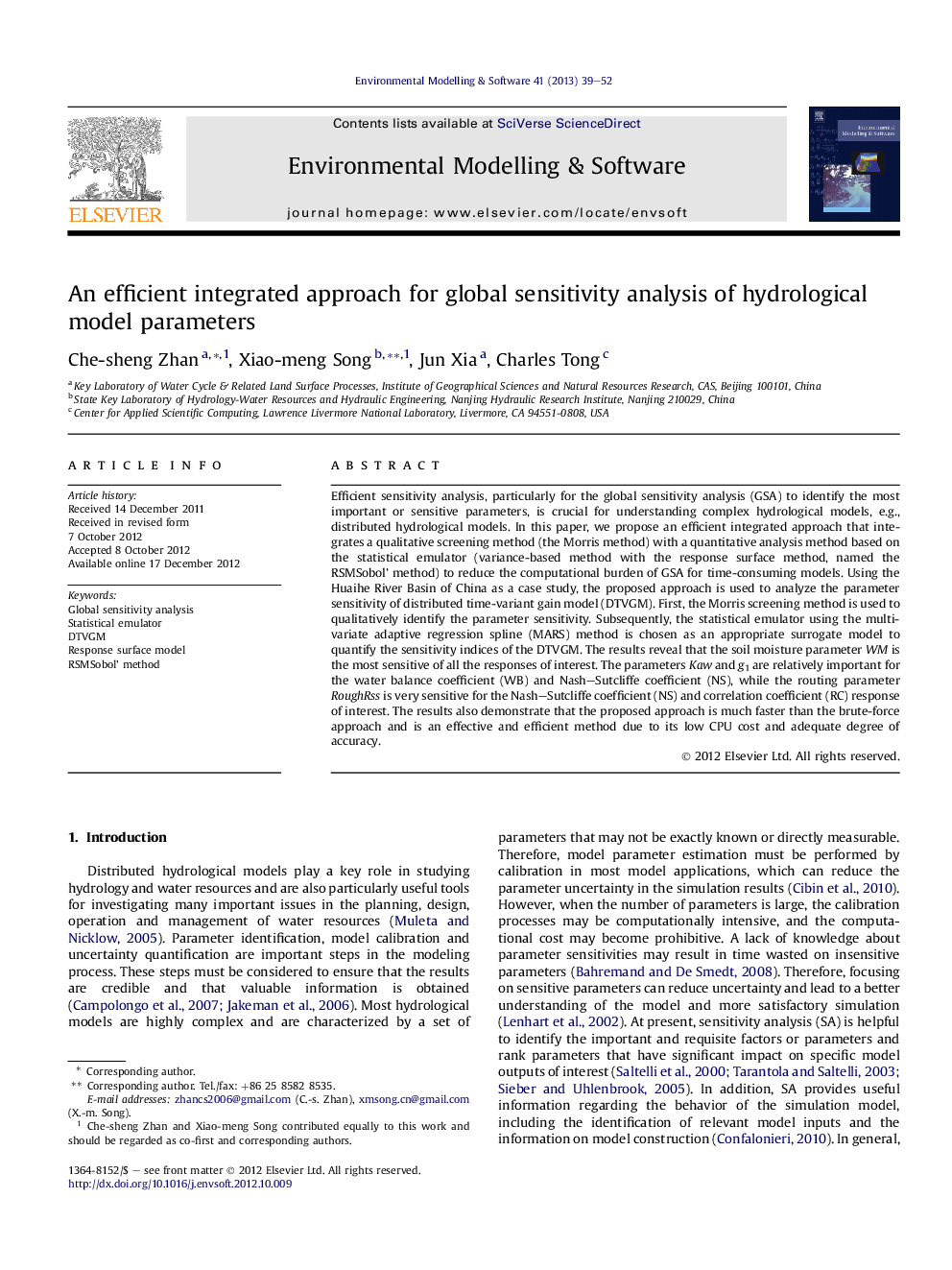| Article ID | Journal | Published Year | Pages | File Type |
|---|---|---|---|---|
| 568534 | Environmental Modelling & Software | 2013 | 14 Pages |
Efficient sensitivity analysis, particularly for the global sensitivity analysis (GSA) to identify the most important or sensitive parameters, is crucial for understanding complex hydrological models, e.g., distributed hydrological models. In this paper, we propose an efficient integrated approach that integrates a qualitative screening method (the Morris method) with a quantitative analysis method based on the statistical emulator (variance-based method with the response surface method, named the RSMSobol' method) to reduce the computational burden of GSA for time-consuming models. Using the Huaihe River Basin of China as a case study, the proposed approach is used to analyze the parameter sensitivity of distributed time-variant gain model (DTVGM). First, the Morris screening method is used to qualitatively identify the parameter sensitivity. Subsequently, the statistical emulator using the multivariate adaptive regression spline (MARS) method is chosen as an appropriate surrogate model to quantify the sensitivity indices of the DTVGM. The results reveal that the soil moisture parameter WM is the most sensitive of all the responses of interest. The parameters Kaw and g1 are relatively important for the water balance coefficient (WB) and Nash–Sutcliffe coefficient (NS), while the routing parameter RoughRss is very sensitive for the Nash–Sutcliffe coefficient (NS) and correlation coefficient (RC) response of interest. The results also demonstrate that the proposed approach is much faster than the brute-force approach and is an effective and efficient method due to its low CPU cost and adequate degree of accuracy.
► A global sensitivity analysis (SA) method based on meta-modeling approach was proposed. ► The qualitative and quantitative methods were coupled and used for sensitivity analysis. ► The first, second, and total order sensitivity indices of model parameters were estimated. ► The impacts of different objective function on sensitivity analysis were investigated. ► Sensitivity analysis for a complex hydrological model is efficiently achieved with low CPU costs.
